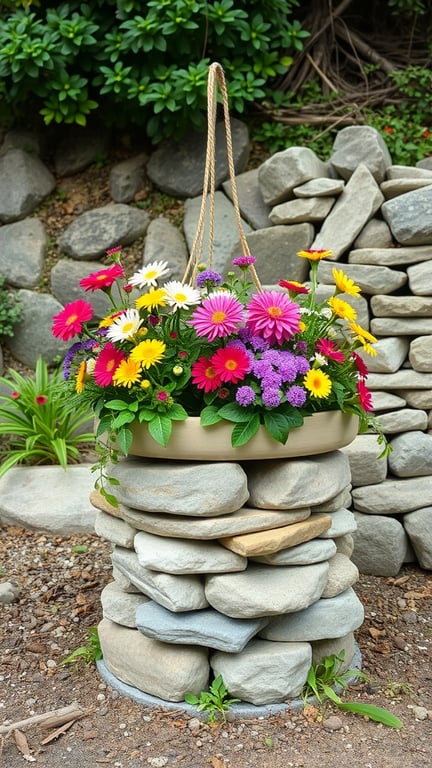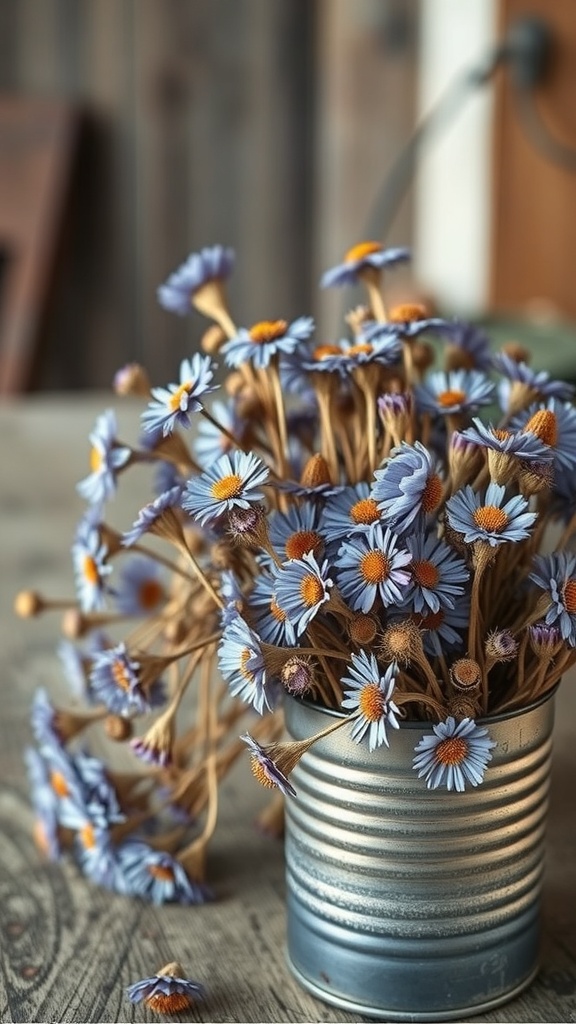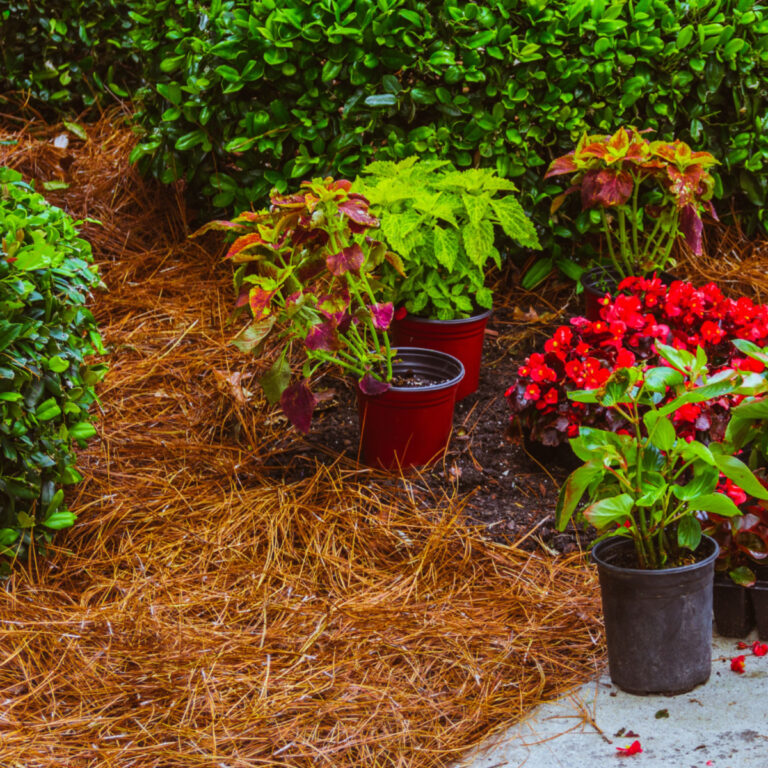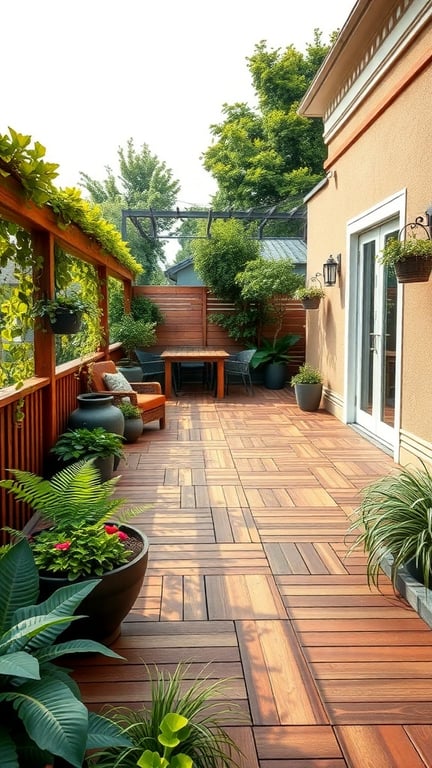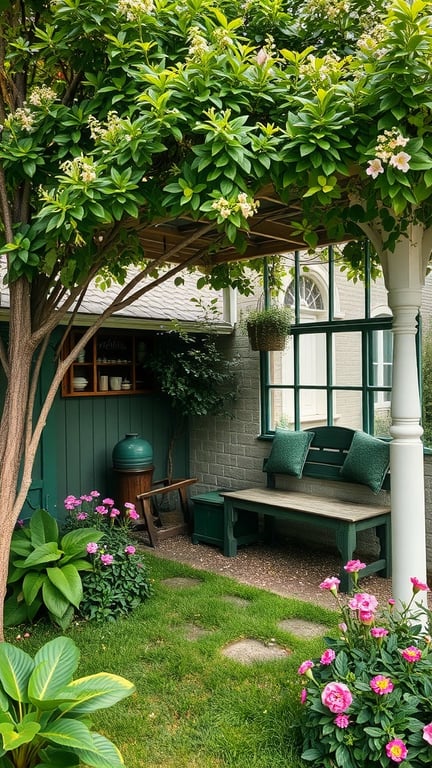21 Inspiring Rain Garden Design Ideas You’ll Love
Rain gardens are not just practical—they’re a fantastic way to beautify your outdoor space while managing water runoff. Here are 21 creative design ideas to inspire your next gardening project, turning your yard into a stunning and eco-friendly retreat.
Creating a Wildlife Habitat in Rain Gardens
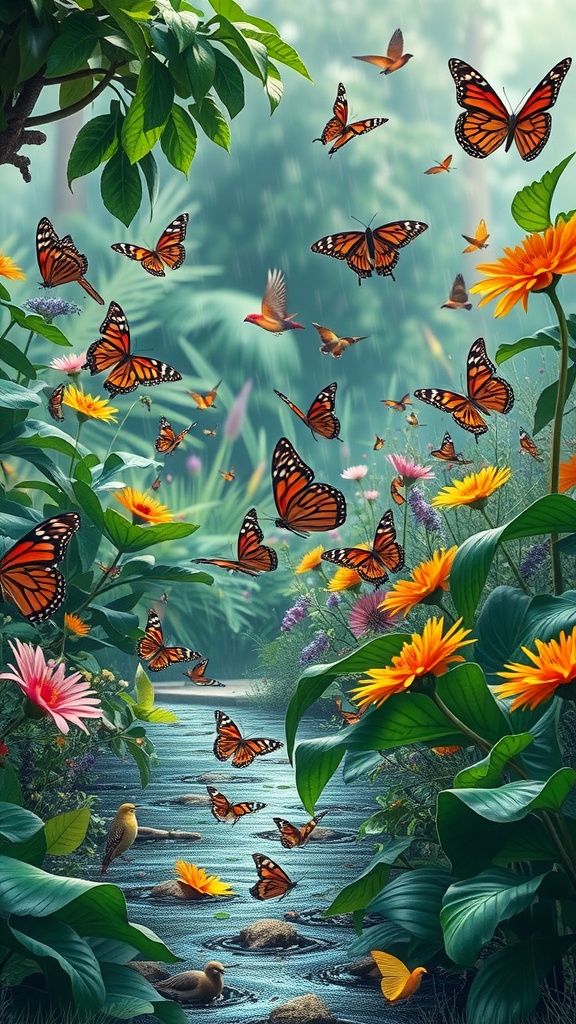
Rain gardens can be beautiful havens for wildlife, and the image captures that perfectly. Imagine vibrant orange butterflies dancing among colorful flowers and lush greenery. The scene feels alive, with tiny birds flitting about, creating a delightful atmosphere.
To create a wildlife habitat in your rain garden, you can start by selecting native plants. These plants attract local insects and birds, providing food and shelter. Adding a water feature can also help, as many animals are drawn to water sources. The flowers in the image show how a variety of colors and shapes can invite pollinators.
A rain garden not only serves as a functional landscape feature but also enhances the ecosystem. This balance between beauty and utility is essential for encouraging wildlife to thrive. Seeing butterflies fluttering around adds a cheerful touch to your garden while supporting biodiversity.
Seasonal Color Variation in Rain Gardens

Rain gardens can be a burst of color, showcasing different flowers throughout the seasons. The image shows a lively mix of flowers in various hues, creating a stunning visual treat. This vibrant display not only pleases the eye but also supports local wildlife.
In spring, bright blooms like daisies and gerbera offer cheerful colors. As summer rolls in, the garden transforms with more species, resulting in a rich tapestry of colors. These seasonal changes keep the garden dynamic, ensuring there’s always something new to appreciate.
Incorporating a mix of perennials and annuals can enhance the color palette and extend blooming times. Choosing species that bloom at different times of the year can help maintain interest and beauty in the garden.
Overall, a rain garden’s seasonal color variation adds depth and excitement, making it a delightful space to relax and enjoy nature’s beauty.
Water Feature Integration: Ponds and Fountains
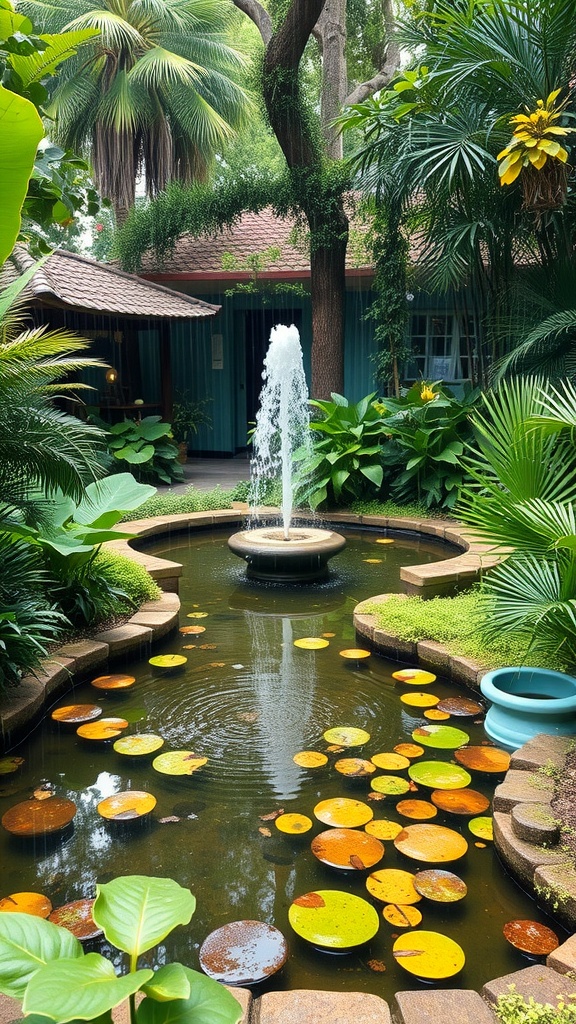
Integrating water features like ponds and fountains into your rain garden design can add a refreshing touch. The image shows a serene pond surrounded by lush plants, with a beautiful fountain at its center. The gentle sound of water creates a calming atmosphere, making it a perfect spot to relax.
The pond is adorned with floating lily pads, showcasing vibrant colors that enhance the overall design. Using natural elements like stones and strategically placed plants not only improves the look but also supports the ecosystem, attracting beneficial wildlife such as frogs and birds.
Consider how the fountain adds movement and visual interest. It can serve as a focal point and provide aeration for the water, helping to keep it clean and healthy. Plus, the splashing water can cool down the surrounding area during hot days.
When planning your rain garden, think about how these water features will interact with the surrounding plants. Choose native species that thrive in wet conditions to complement the pond. Overall, ponds and fountains can elevate your rain garden, making it both functional and beautiful.
Utilizing Rain Barrels for Water Management
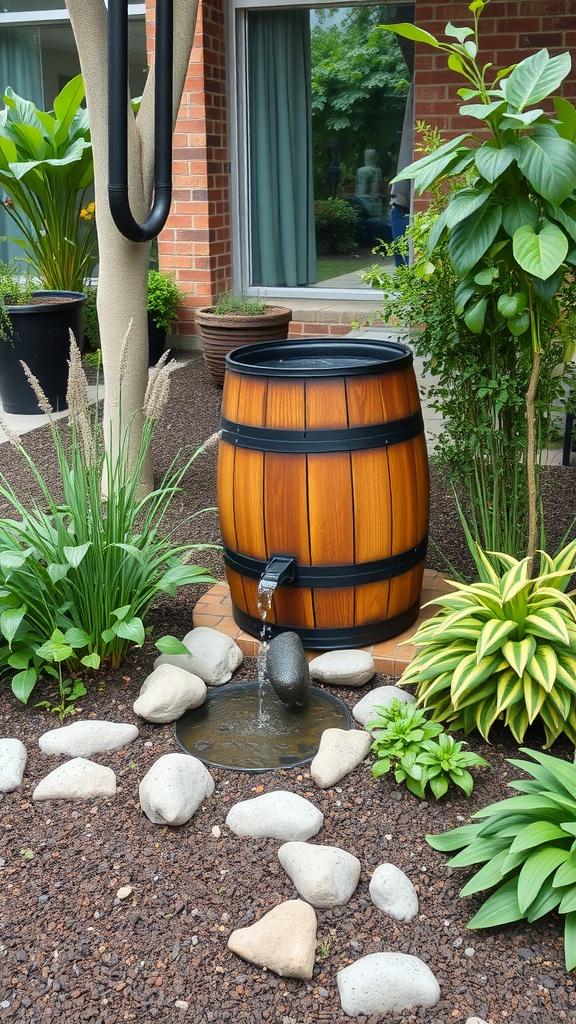
Rain barrels are an excellent addition to any garden. They help collect rainwater from your roof, providing a free and eco-friendly water source.
The image shows a charming wooden rain barrel set up in a lovely garden space. Notice how it blends seamlessly into the surroundings with lush greenery and decorative stones. This setup not only captures rainwater but adds a rustic touch to your landscape.
To install a rain barrel, simply connect it to your downspout. This allows rainwater to flow directly into the barrel when it rains. The collected water can be used for watering plants, washing outdoor furniture, or even filling a small fountain, as seen in the image.
Using rain barrels can significantly reduce your water bills while promoting sustainable gardening practices. Plus, they help prevent erosion and stormwater runoff by managing excess rainwater efficiently.
Incorporating Hardscapes in Rain Garden Designs
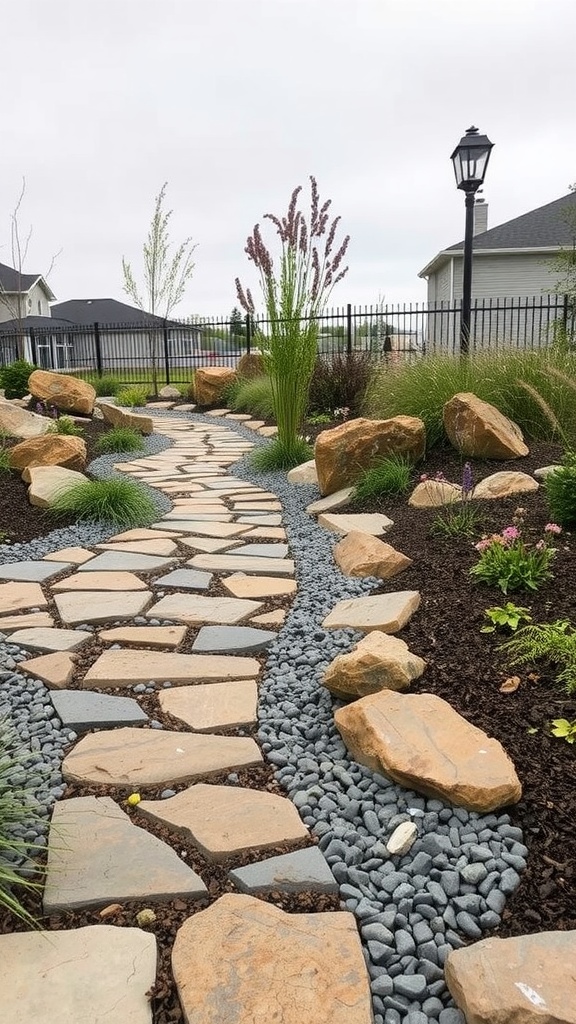
Rain gardens are fantastic for managing stormwater while adding beauty to your yard. They can be enhanced by using hardscapes, which are non-plant elements like stones, pavers, and pathways. In the example shown, a charming stone path winds through the garden, guiding visitors while also providing a functional drainage system.
The use of large rocks and gravel not only complements the greenery but also helps in directing water. This design blends natural materials with artful arrangements to create an inviting space. Notice how the path curves, leading the eye through different sections of the garden.
Incorporating features like lighting, as seen with the lamp post, can add a cozy touch and illuminate the space at night. This can make your rain garden a lovely spot for evening strolls.
Overall, combining hardscapes with plants and flowers can transform a rain garden into a stunning landscape, making it both practical and visually appealing.
Native Plant Selections for Rain Gardens

Rain gardens are a fantastic way to manage stormwater while adding beauty to your landscape. One of the best features of these gardens is the use of native plants. Native plants are adapted to your local environment, making them easier to maintain and more beneficial for local wildlife.
This image showcases a vibrant selection of native plants that thrive in rain garden conditions. The bright colors and varied textures highlight the beauty that can be achieved with thoughtful plant choices. Each plant contributes to the overall health of the ecosystem, attracting pollinators and providing habitat.
When selecting plants, think about their growth habits and water needs. Grouping plants with similar requirements can create a more efficient and stunning garden. For example, tall grasses can add height, while colorful flowers bring pops of color. Mixing different plant types can ensure a dynamic look throughout the seasons.
Remember, a rain garden can be both functional and visually appealing. By incorporating native selections, you create a space that not only handles rainwater but also supports local biodiversity and enhances your outdoor experience.
Layered Planting for Visual Interest
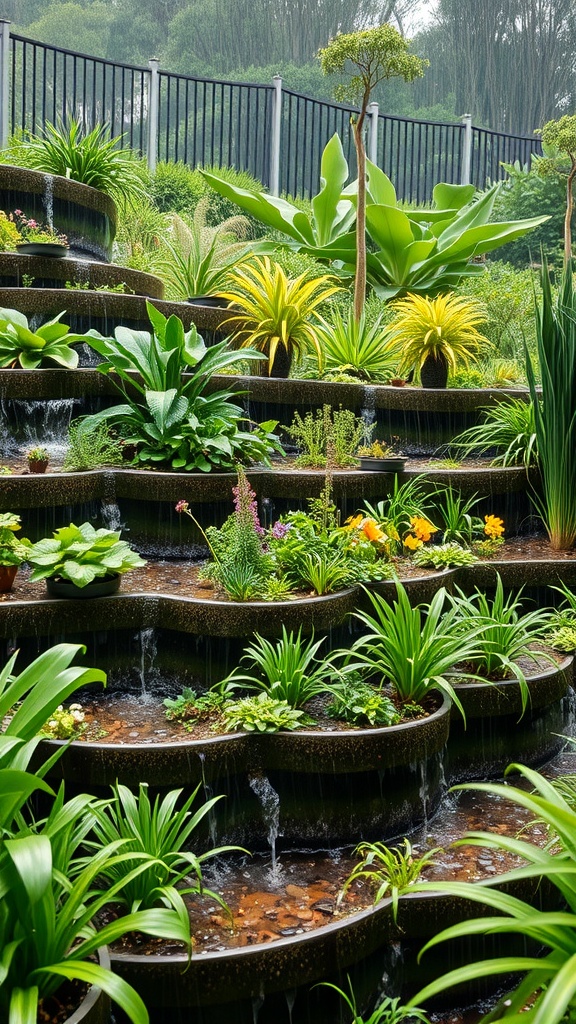
Layered planting creates a stunning visual appeal in a rain garden. This method involves arranging plants in a way that showcases their textures, colors, and heights. The image captures a beautiful example of this technique, featuring a tiered garden structure filled with various plants.
The garden has multiple levels, each showcasing different types of foliage. From vibrant greens to striking yellows, the color palette draws the eye. The cascading water adds an extra touch of charm, making the plants seem even more lively.
Using layers allows gardeners to play with plant heights, making the space feel more dynamic. Taller plants are placed at the back or center, while shorter ones fill in the front. This arrangement not only looks good but also helps with water drainage, essential for a rain garden’s function.
Choosing a mix of textures can enhance the garden even further. The glossy leaves of some plants contrast beautifully with the soft textures of others. This diversity not only makes for a more engaging visual experience but also supports various wildlife.
Overall, layered planting is a fantastic way to add depth and interest to any rain garden. It’s a simple yet effective way to create a beautiful, functional space.
Rain Garden Layouts for Small Spaces
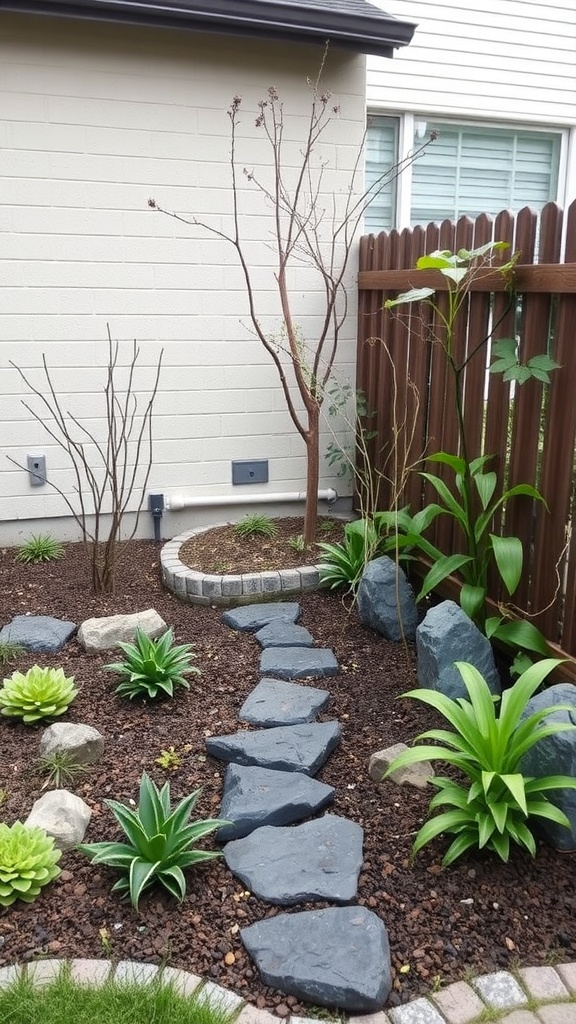
Creating a rain garden in a small space is a great way to manage stormwater while adding beauty to your yard. The image beautifully captures a compact rain garden layout that maximizes functionality and aesthetics.
The garden features a winding stone pathway guiding you through a mix of plants. The stones not only create an inviting path but also help with drainage. This thoughtful design is perfect for narrow areas, showing that even limited spaces can be transformed into lush environments.
In the center, you can see a variety of plants that thrive in moist conditions, which are essential for a rain garden. The darker stones contrast nicely with the greenery, adding dimension to the overall look. Each element works together harmoniously, making this a fantastic example for anyone looking to design a rain garden in a small area.
Incorporating different plant heights and textures keeps the space visually interesting. You can also see the use of larger stones around the edges, which not only frame the garden but help to prevent soil erosion.
Creative Edging Solutions for Rain Gardens
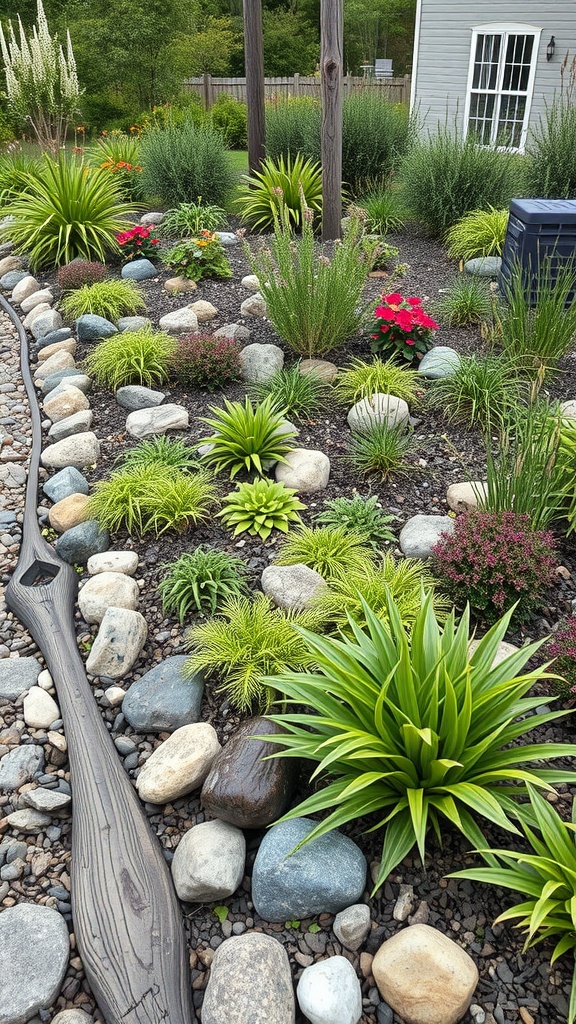
Rain gardens can be a stunning addition to any landscape, and the way you edge them can make a big difference. The image here shows a lovely rain garden with a variety of plants and rocks, creating an inviting, natural look. Notice how the rocks form a border that not only organizes the space but also helps manage water flow.
Using different types of stones gives a unique touch. Larger boulders can serve as focal points, while smaller pebbles fill gaps, adding texture. This combination enhances both functionality and aesthetic appeal. You can also mix in wooden elements, like the paddle seen here, which adds warmth and character to the garden.
Choosing plants that thrive in wet conditions is key. Here, you see vibrant flowers and lush greens that bring life and color. They not only beautify the area but also draw in pollinators, contributing to a healthier garden ecosystem. Think of your rain garden as a canvas where you can express your creativity while being eco-friendly.
Edible Plants in Rain Gardens
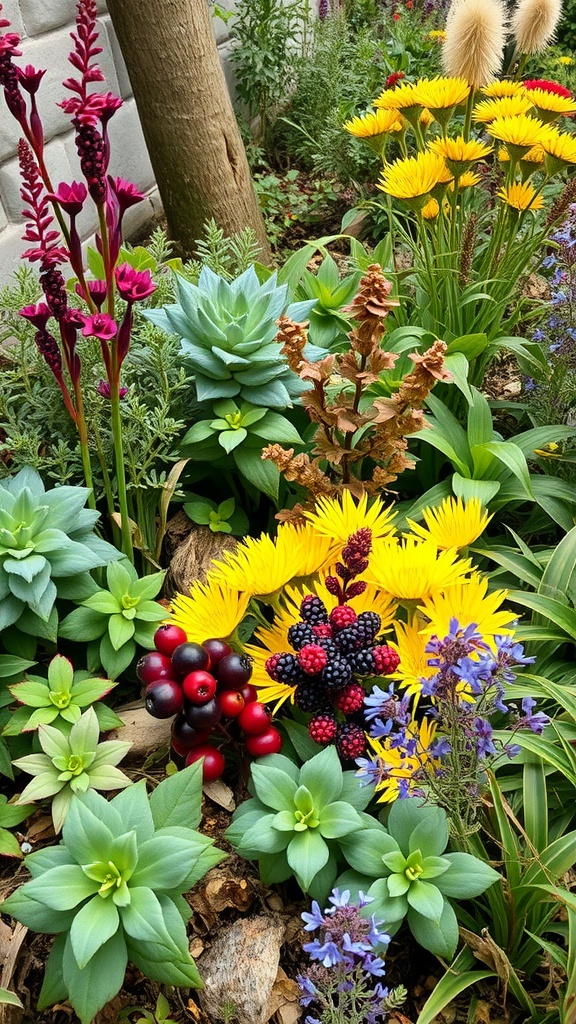
Incorporating edible plants into rain gardens can be a fun and rewarding choice. These gardens not only manage water but also provide fresh produce right outside your door. The image showcases a vibrant mix of edible plants surrounded by colorful flowers, creating a visually appealing and productive space.
Plants like berries, leafy greens, and herbs can thrive in a rain garden setup. The bright clusters of blackberries and other berries in the image highlight how you can enjoy tasty fruits while enhancing biodiversity. This combination attracts pollinators and can turn your garden into a lively ecosystem.
Choosing native edible plants is a smart way to ensure your garden remains sustainable. They’re adapted to the local climate and require less maintenance. Imagine picking fresh salad greens or snacking on juicy berries right from your garden!
With proper layering and plant selection shown in the image, you can maximize both beauty and productivity. Using plants that can tolerate both wet and dry conditions will ensure your rain garden stays healthy throughout the seasons.
Drought-Tolerant Plant Choices for Rain Gardens
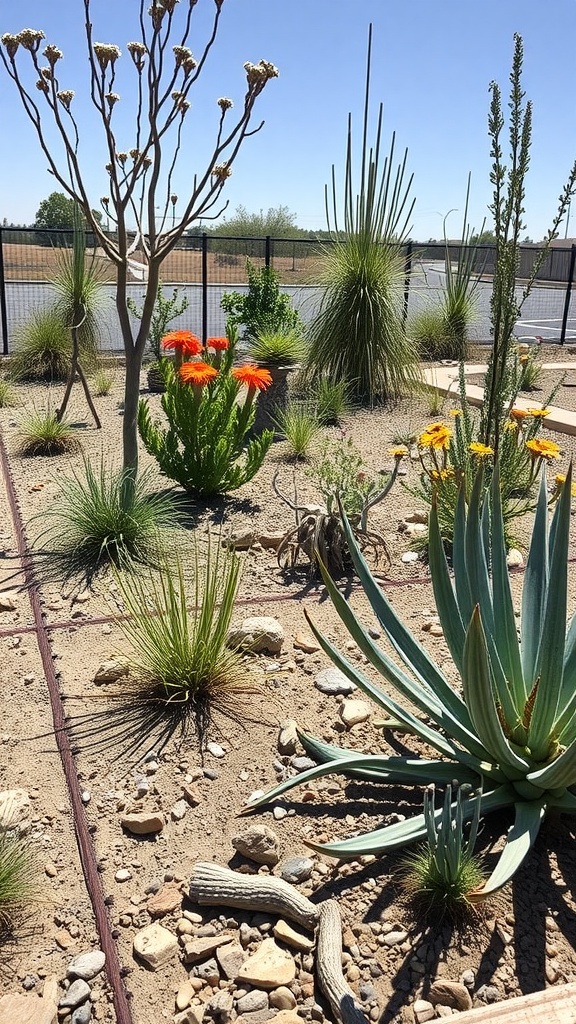
Choosing the right plants for a rain garden is essential, especially in dry climates. Drought-tolerant plants thrive with minimal water, making them perfect for these gardens. The image showcases a variety of such plants that not only survive but also add beauty to the landscape.
The striking colors of the flowers in the foreground grab attention. Bright orange flowers stand out against the green and gray tones of the surrounding foliage. This color contrast makes the garden visually appealing while promoting biodiversity.
In the background, you’ll notice tall, spiky plants that offer height and structure. These plants are designed to withstand dry conditions while providing a unique texture to the garden. Incorporating such varieties ensures that your rain garden remains vibrant even during dry spells.
Rocky elements add an organic feel to the space. They help with drainage and prevent erosion, making the garden more functional. Overall, the combination of different plant types and textures creates an inviting environment while showcasing the beauty of drought-tolerant plants.
Rain Garden Paths: Functional and Aesthetic
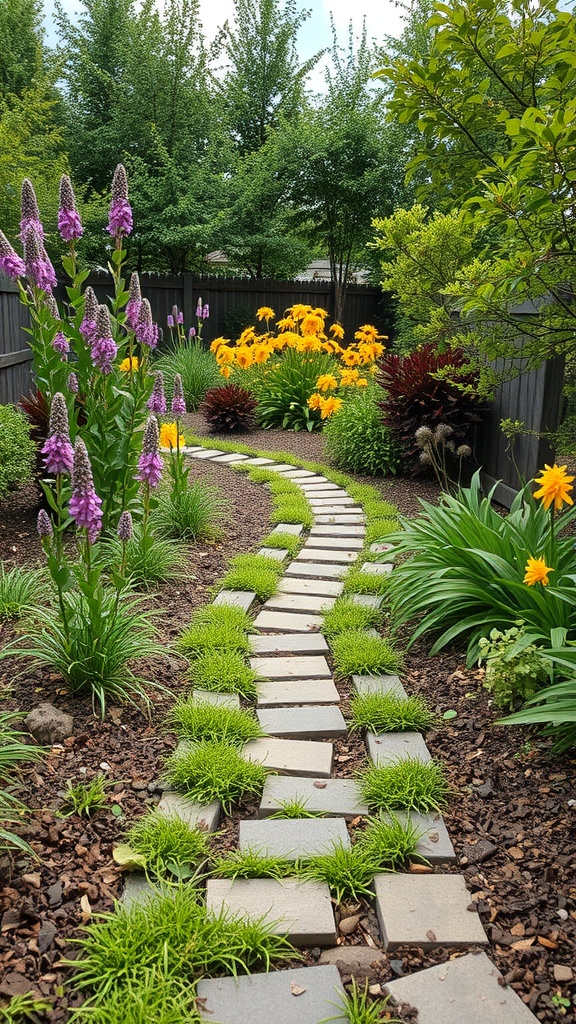
Creating a beautiful rain garden path adds charm and function to your outdoor space. The image showcases a winding stone pathway, flanked by vibrant flowers and lush greenery. This design not only guides the eye but also helps manage rainwater effectively.
Using stepping stones surrounded by soft grass creates an inviting look. The flowers add pops of color, enhancing the overall beauty while attracting beneficial pollinators. Such paths can make your garden accessible and enjoyable, offering a peaceful retreat.
The combination of natural materials with careful plant selection highlights the path’s functionality. It directs water flow, preventing erosion while promoting healthy drainage. This makes it practical and eco-friendly, a perfect blend for any garden lover.
Incorporating Educational Signage in Rain Gardens
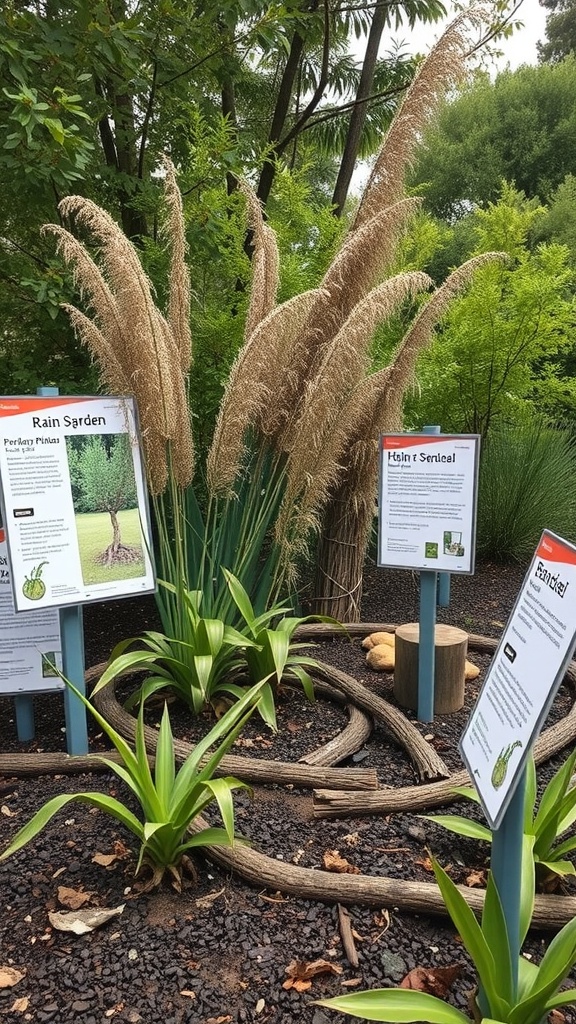
Rain gardens not only help with stormwater management but also offer great opportunities for learning. The image shows a vibrant rain garden featuring informative signage. These signs provide details about the plants and their roles in the ecosystem.
Incorporating educational signage is a smart move for any rain garden. It invites visitors to engage with the garden, learn about native plants, and understand how they contribute to the local environment. The signs can be simple yet effective, providing information on plant species, their benefits, and care tips.
By including well-placed educational displays, you help foster a sense of appreciation for nature. People can learn how rain gardens function and why they are important for reducing runoff. Overall, this combination of beauty and education can inspire others to create their own rain gardens.
Rain Garden Maintenance Tips for Longevity
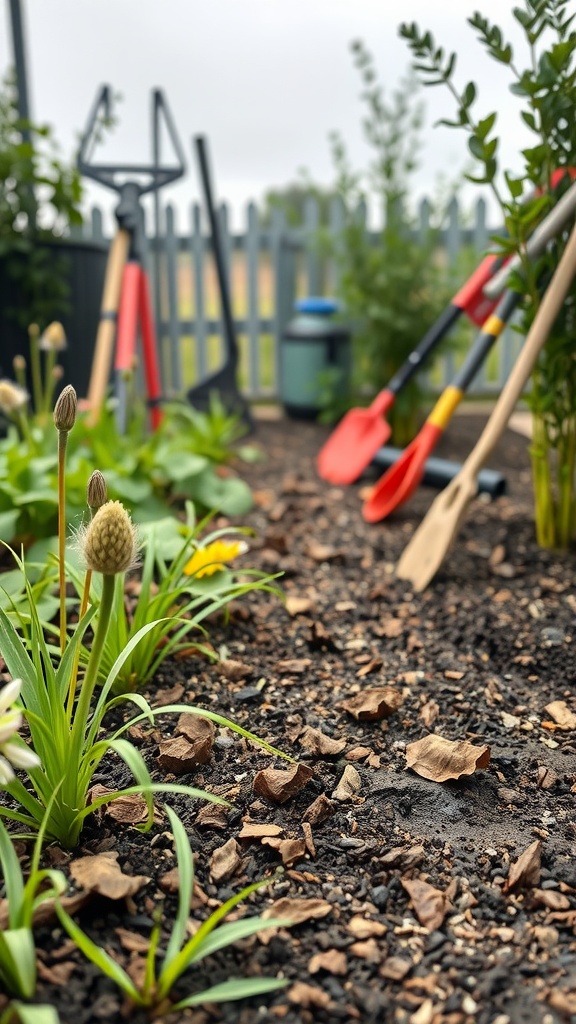
Keeping your rain garden thriving requires some regular care, and a well-equipped garden space makes the job easier. In the image, we see essential gardening tools like shovels, rakes, and a watering can, all ready for action. This organized setup highlights the importance of being prepared for maintenance tasks.
Start by removing debris and fallen leaves regularly. This prevents buildup that can clog drainage and affect water flow. A quick weekly check can save you from bigger issues later on.
Next, monitor your plants. Some may need pruning or dividing to maintain their health and shape. Healthy plants contribute to the garden’s overall function, helping manage water effectively.
Pay attention to soil condition as well. Adding compost can enrich the soil, promoting better growth. Keep an eye on moisture levels, especially during dry spells, and water accordingly.
Lastly, make sure to check for any signs of pests or disease. Addressing these issues early can prevent further damage. With a bit of routine upkeep, your rain garden can flourish for years to come!
The Role of Mulch in Rain Garden Design
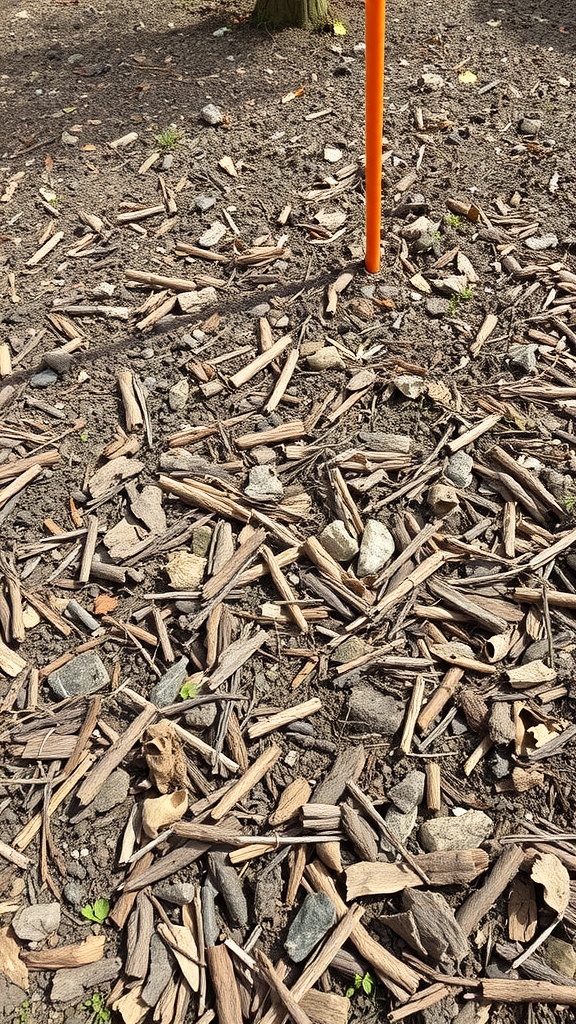
Mulch plays a vital role in the design of rain gardens. It helps retain moisture in the soil, ensuring that plants get the water they need. In the image, you can see a layer of mulch covering the soil, mixed with some stones. This combination not only looks great but also serves practical purposes.
Using organic mulch, like wood chips, helps improve soil health over time as it decomposes. It also prevents weed growth, which can compete for nutrients and water. The mulch in the picture is uneven, giving a natural look while providing essential support to the ecosystem.
When designing your rain garden, think about the type of mulch you want to use. You might lean towards natural options that blend well with your plants. This will not only make your garden functional but also visually appealing.
